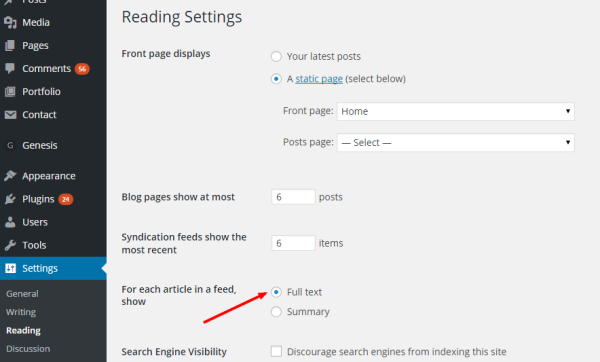Let’s cut to the chase. The web is filled with how-tos and case studies and best practices on how to do Content Marketing right. As Content Marketing strategists here at Spiralytics, we are trained to base our content creation and strategy on available data—top performing posts, relevant industry topics, the types of articles that convert more, among others.
Then again, I’m not just a strategist, I’m a consumer too. And as someone who consumes Content Marketing resources day in and out, I find that there are a few rules that have to be broken for the benefit of the reader, even if it means sacrificing your metrics a little bit. Not exactly based on actual data, this list of Content Un-marketing tips are based on rule-breaking ideas that we’ve seen some industry experts do on their blogs. Also, consider this as my personal wish list as someone who reads a lot of content daily.
1. Remove Blog Comments

First of all, we’re not doing a Copyblogger around here and removing our comment section. It’s not yet giving us a headache. 🙂 That area below your blog post is the part where you can engage with your readers and welcome additional user-generated content. And yet somehow, even though Content Marketing guides would tell you to make your comments section alive, I sometimes wonder how much time all of us would save if comments sections are removed from the face of the internet.
It became the talk of town last year when Copyblogger made a huge and drastic decision to take off their comments section. There were debates and discussions in the industry. Others thought they had an undercover strategy. Some disagreed. Some tried to understand. Sonia had to explain herself. Copyblogger gave themselves a 6-month trial period. It’s been over a year now and I suppose the decision has worked for them as they stood their ground.
One of the reasons Copyblogger claimed to have done this was, the site has grown so much that they’re spending more time than necessary weaving through spam and blog comments. And while many of us don’t have that problem with our blogs, I realized that as a reader, I spend a ginormous amount of time scrolling through other sites’ comments section myself, hoping to get additional insights. However, more often than not, that area is really infested with commenters who have their own digital marketing agenda, as well as spam, trash, and negativity. Stuff you really don’t want to waste time on.
Can the world move on without blog comments? I think so.
Can we move on without engagement and interactions? I don’t think so.
Perhaps it’s all about knowing whether blog comments are for you, or finding the right venue for discussions. Copyblogger may have removed the blog comments, but what they did was move the discussions over to their LinkedIn page. Pretty brilliant, I must add, because now they know exactly who they’re engaging with.
2. Put a Time Stamp on Evergreen Posts

I am a strong believer of evergreen posts. This is one of the reasons why blogging is such a valuable tool for anyone. Old posts you thought no one read would suddenly get found one year later, proving that Content Marketing has the ability to gain both short-term and long-term results.
In that note, creating evergreen posts is necessary, and repurposing or updating old content is a strategy that many of us use to improve our database of resources.
Here’s the thing. One pet peeve I have in coming across evergreen posts is the absence of time stamps. (Come on guys, it is just me?) As a reader, I like looking at the date (or at least the year!) the article was created to know if it’s still relevant.
Kissmetrics, for one. Don’t get me wrong. I loooove Kissmetrics. I’m a blog subscriber, and I digest EVERYTHING they say on their blog. And who doesn’t love Neil Patel, right? But the Kissmetrics blog doesn’t have a time stamp. So when you’re coming to their site for the first time through a blog post, like this one below, you’d wonder if the information you’re getting is updated.

For example, when you’re searching for ways to “improve your business with Google Analytics” (as with the above screenshot) and you land on an article that suggests dated tips, you get misinformed. This article was posted so many years ago. You can guess the date by way of the comments, sure. In this case, there are two comments, one from 2008 and one from 2011. But do you really want your readers to figure that out themselves? Why not just show a time stamp?
And since I was just talking about Copyblogger, I thought I should raise that they also don’t show the date of their blog posts.

How do we, readers, know if this article is still relevant?
Is removing the date some form of strategy? I wonder.
WordPress by default has the year and date presented in the URL, which is particularly helpful for people like me who want to validate the relevance of the posts I read. Many deactivate these parameters to make the URLs more optimized for search. And that is ok. But where is the timestamp?
In that note, I particularly appreciate BackLinko for having a date stamped on its blog posts. Brian Dean, the genius behind Backlinko, does a good job at updating posts to make them more relevant, and makes it a point to show the date they were last updated.

Case in point, this article on Skyscraper Technique which I remember reading for the first time in 2013. It’s good to know that the article was updated in January 2015, which means I can be assured of its relevance.
In conclusion, update and repurpose your evergreen posts, but please put a time stamp too.
3. Screw Word Count

How long should your blog post be? That’s a question that I get asked all the time. Here’s a good guideline on word count—300 to 600 words if you want to get more comments; 1000-1,500 words if you want to get more shares on social media; above 2,500 words if you want to rank better in Google.
But how about we stop counting?
I say, there’s really no magic formula.

The best performing post in this blog ever, for example, is nowhere near the above-mentioned word counts. What it does have are (1) the word “annoying” on the title; (2) a number on the title—by the way, this works really well! (3) a funny topic relating to designers; and (4) lots of visuals.
Jevie, our graphic designer, who knew little about blogging stats or metrics or best practices, created an article that was funny and relevant to her, out of the abundance of her heart. (Funny, relevant and from the heart, are really good bases for writing content.)
Viola, 13K likes at the time of this writing, garnering a couple of thousands of page views, earning hundreds of links, and gaining us occasional spikes in our traffic data, which means the article is continuously being shared around.
Yup. I think we don’t need to count words.
4. Show the Full Posts on your RSS Feed

People still show partial feeds, for some reason. The idea is simple. If you only show excerpts of your post on your RSS feed, it forces your readers to view the full post on your blog. Consequently, if you show the full posts on your feed, then you allow your subscribers to read from their feed readers without having to visit your blog.
I don’t know about you but partial feeds is really annoying for me. I like reading while in transit, so scrolling through my RSS reader (hello Feedly) on my smartphone is very convenient for me. Sometimes, when a blog is only showing partial feeds, I don’t bother to click through anymore. I skip the post and move on.
I understand that showing partial feeds is a strategy to get your readers to your site; But hey, it’s the year 2015, and getting page views is not anymore as relevant as people remembering your brand because you give them the ability to access your content anytime they want, and however they please.
So. If your blog is on WordPress, make sure you tick that option.

You will lose some traffic but trust me, you’ll gain more readers.
5. Don’t Blog Everyday

Some say blogging everyday does wonders for your blog and your business. Traffic will definitely shoot up, you’ll have more cached pages on Google, more keywords on your site, etc, etc.
I say, blog everyday if you have the manpower and resources, or if daily exposure is absolutely important for your business goals.
But unless you’re Rappler or you’re Seth Godin, don’t burn yourself out by forcing yourself to blog daily. Instead, commit to a regular blogging schedule that you can manage and stick to it. Even more, commit yourself to write less but more relevant content. Less is more, guys. Consistency, not daily, is the key.
I shall end this with this quote from Pablo Picasso, which I suggest we try to apply to Content Marketing—
“Learn the rules like a pro, so you can break them like an artist.”
Oh yeah.



